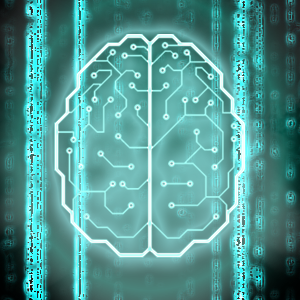[Entry log #3346]
Words rapidly grew into ideas.
Sadly, the anonymous graveyard gardener never gave me his name and I have failed in my attempts to find him during following visits to that same cemetery.
Nevertheless, the echo of his words has yet to cease in my mind.
Following them, I gradually turned to the study of neurotechnology, a subject that was not far from my original field of research.
I have spoken with other researchers of that same field about the intriguing concept the mysterious stranger had offered, and even though some of them openly jeered at the idea at first, they were eventually interested in looking into the practice of programming and rewriting memories.
[Entry log #3350]
I have eventually left my previous research to focus my energy into the study of neurology, and finding how and where in the brain the memories are being created and stored.
During my new work I have met with numerous doctors and professors from the field of research and treatment for memory problem from different levels of severity.
Some of the new colleagues specialized in mapping the network of neural connections in the nervous system to understand how it's operating, and were thrilled to delve into something as complex as the part of the brain that records and stores the memories.
A small team soon formed out of those who expressed the highest interest in the "Memory Tree" theory, and showed a great will to lend a hand, hoping to witness the expected results.
[Entry log #3352]
I worked with some of the greatest minds in the field for a few years to develop this theory into a practical thing, and our fruits of labor started to show once we started to test on small rodents.
We have preformed countless of preparations and walked mice in a maze dozens and hundreds of times, and after each run we'd map its brain, slowly creating our first mapping that gradually documented how experience translated into a memory, and later accessed when the mouse went through the maze in a singular path.
[Entry log #3358]
These mapping trials went on for several more years with a very positive success rate. But now came the harder part, of extracting that knowledge and transfer it into the brain of a new tester, one that's completely unfamiliar with this maze, and have it make a perfect run on the first trial with no bait or other stimulants.
We began using a new method of implanting the information into the rodent's brain through administrating carefully aimed electrical pulses which contained the desired data into its brain.
It was a staggering success, with inclining rates.
We started branching to experiments on other small mammals, and even some reptiles, after we made a new mapping fitting for that species' different structure.
Needless to say, however, we came to some problems trying this on marine life.
In our attempts to apply this in as many possible situations, we started working on something slightly less deadly and more accurate than electrical pulses.
[Entry log #3370]
We have reached a dead end.
While we did improve on our method of implanting memories into a living organism, there was only so much we could achieve testing it on animals.
A human subject was required to properly test this system, but we couldn't seem to acquire any willing subjects, not even terminally ill patients or death row inmates.
Curse this ethical integrity regarding human experimentation.
Our main research drifted into different directions as we tried to find something that will provide a better source of more complex memories than a mouse.
In our attempts, we were contacted by a friend of the engineer who constructed our prototypes. They have offered to write a program for the system that converts information to the "language" the brain is using, enabling us to go from recording existing memories to writing entirely new ones.
Their enthusiasm was infectious, and soon enough the team was up for the task of deciphering the way our brain encrypts information.
Having no other choice at that time, we have preformed the mapping on each other to receive some initial data.
That was enough, for the time being, and the search for a living test subject kept going behind the scenes.
[Entry log #3375]
Results broke past all expectations.
We have managed to isolate some basic core memories such as motor skills and language, a feat that meant - theoretically - that we could essentially teach a human how to walk, read and talk in an instant.
Unfortunately, this breakthrough will remain within theory as long as we can't get a living test subject.
As we brainstormed about a way to overcome this incessant hurdle, our engineers pitched an idea that could potentially catch the interest of some larger supporters.
Through some changes to the system and its program, we could essentially do the opposite of its first intended use and - simply put - erase specific memories.
The potential of curing people of trauma related ailments was incredible, and we worked tirelessly to analyze more memories so we could apply this theory as soon as possible.
This time it wasn't long before we were ready to pitch this idea that seemed so impossibly insane in first glance.
Who knows what else we can do with means like that, once someone takes serious interest in it.
Alas, our greatest achievement was my own personal downfall.
Interest indeed spiked tremendously when we showed off the concept of the "Memory Eraser", and companies offered to invest in it, but as the final product.
But it should have been just a single step; A side project until the issues of the main one will be resolved.
This was not what I wanted.
I was so close to cracking the method to implant memories, when our little team disbanded and every single member was offered a better job in one major corporation or another.
My one solace was that the engineers let me keep the latest versions of the machine and its program, and didn't demand any pay in return.
I turned the apartment we used as our research grounds to my new lab and testing facility.
Never halting my research, I came across the same obstacle in every route I went through - I no longer had a living test subject, not to take memories from or give them new information.
Things were not looking up.
_____
[Entry log #3390]
I came close to giving up altogether when I happened upon an interesting research that dealt with the brains reaction in the face of certain death.
Participants were subjected to a sensory simulation of various ways of immediate death, and their brain reaction was monitored at the second of impact.
Records showed a reaction that the participants described as "near-death", but the registered reaction was of the systems nearly shutting down - skipping a heart beat, muscled turned rigid and a sense of conscience loss.
Some reported they actually thought they died, even though they knew the weren't in danger.
I saved the findings and thought about what turned to be the "Mind Eraser". I still had the tools and the software to make something of it.
This trial also required a test human subject, but this time I could afford to be less...picky.
[Entry log #3392]
Executions have spared me the gruesome job of grave-digging for corpses that were fresh enough to work with, and with the added bonus of today's clean and humane methods leaving the tissues relatively undamaged.
With no family or friends to consult with, there were significantly less permits to get in order to receive the body as a donation in the name of science.
That certainly was the case, and it was what landed me a well preserved and chilled corpse of a convict who received a lethal injection as his parting gift.
Admittedly, I felt bad that my colleagues weren't there to witness this experiment, but there was no time to dawdle.
There was plenty of work to be done as it is.
[Entry log #3395]
The chemicals used in the lethal injection didn't cause tissue damage on their own, but there was still the inevitable damage caused by a prolong lack of oxygen.
The medical crew really did their best at preserving the body in its best condition, but this was beyond their control.
I did everything in my power to re-oxidize the tissues and slow their decay, working on preparations day and night, until there was last thing left to do.
[Entry log #3397]
For the first time in my life I really could not believe my eyes.
A powerful electrical surge along with a very precise work with the Memory Eraser jerked the body back to life. Of course, "life" was a debatable term at this point, since the body could not support itself for long and was very short lived, probably not even reaching any level of awareness.
But that was all the more reason to keep trying.
I called up one of the old team's engineers for a favor, and they were so grateful for this project landing them the job of their dreams, that they agreed to help for free.
Taking his offer, I brought up two requests: the first were a two pairs of mechanic prostheses - hands and feet - that will fit a grown man. They agreed, thankfully, without asking anything.
The second request was a child-sized robot, that will look like a little boy and will be able to move freely, and specified that there will be no need for an actual AI, just his best data storage unit.
They only asked for some specifications, but not once about the reason, and promised to work on it.
I made it clear that the prostheses were of top priority, and they said they'll send it my way the moment it's ready.
Feeling relieved that things are taken care of, I went back to my attempts at improve the condition of the corpse, as best and as fast as I possibly can.
[Entry log #3398]
The reviving process was done several times, during which the prostheses have arrived.
Time took its toll, as expected. Hands and feet were the first to become irreversibly damaged and had to be disposed of.
Luckily, the mechanic ones fit like a glove in their stead. They seemed to be working in the short bursts of life in the test subject, who was still too unstable to be considered alive, but he wasn't completely dead either.
Once I got my hands on some life supporters I managed to put him into a comatose state and cooling down his body, in hopes that as long as the brain is somewhat active and was circulating blood, tissues may heal over time.
[Entry log #3400]
Subject #1 was finally fully awake.
Although I didn't know what to expect, his wild and aggressive behavior was no surprise. It was hard to tell whether it came from his true nature as a convicted killer, or from repeated revival attempts that were probably not the best for the gray matter.
Regardless, my decision to strap him to his bed was a correct one.
First communication attempts taught me that he understood at least parts of what I was saying, but he managed to answer only with some guttural grunts and growls, fitting to his animalistic behavior.
That is assuming, of course, that he really was trying to communicate back.
A quick neurological check revealed a certain degree of vision impairment, but other than that he was still reacting to external stimulation, such as sounds and smells, as these sense seemed to be covering for his damaged eyesight.
Now came the next important experiment of testing the machine's initial function of implanting memories, and giving this blank slate of a being motor and verbal knowledge to recreate his basic core memories.
It was the first time time since the beginning of the project that this function is tested on a living human.
I'd say it's about damn time.











Comments (0)
See all